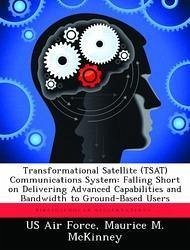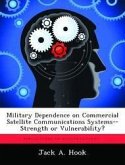The Transformational Communications Office's (TCO) 17 December 2003 report states, "The current SATCOM and data relay systems are unable to meet future bandwidth demands. They lack capacity, in both aggregate data rate and the number of users they can support. . . . Furthermore, the life expectancies of the existing space segments and much of their associated terminal and management segments do not extend beyond the 2010-2015 time frame." These shortfalls and the military's insatiable demand for bandwidth led to the creation of the Department of Defense's (DOD) TSAT. TSAT's five-satellite constellation will be capable of delivering advanced capabilities to the war fighter via 8,000 radio frequency (RF) links and between 20 and 50 laser communication (lasercom) links. These advanced capabilities will deliver significant communications bandwidth by incorporating advanced laser and RF technologies, softwareconfigurable terminals, packet switching, network management, and interface standards. All of these technologies will rely on Internet protocol (IP) interoperability as the enabling technology for connecting the war fighter. The thesis of this paper is that the advanced capabilities provided by TSAT are limited and will not be sufficient to serve the ground-based portion of the communications network supporting network-centric warfare (NCW). To validate this proposition, this study will start by identifying space-based systems that will enable NCW, discuss the requirements for ground-based NCW, and finally determine the combination of spaced-based systems sufficient to deliver advanced capabilities to the war fighter.
Hinweis: Dieser Artikel kann nur an eine deutsche Lieferadresse ausgeliefert werden.
Hinweis: Dieser Artikel kann nur an eine deutsche Lieferadresse ausgeliefert werden.








